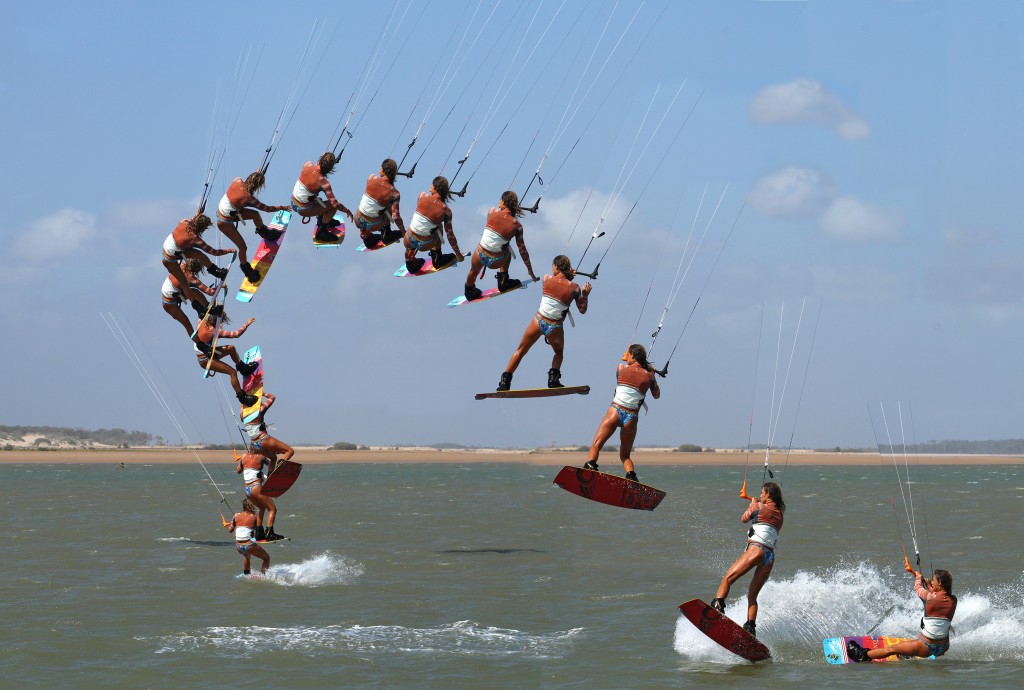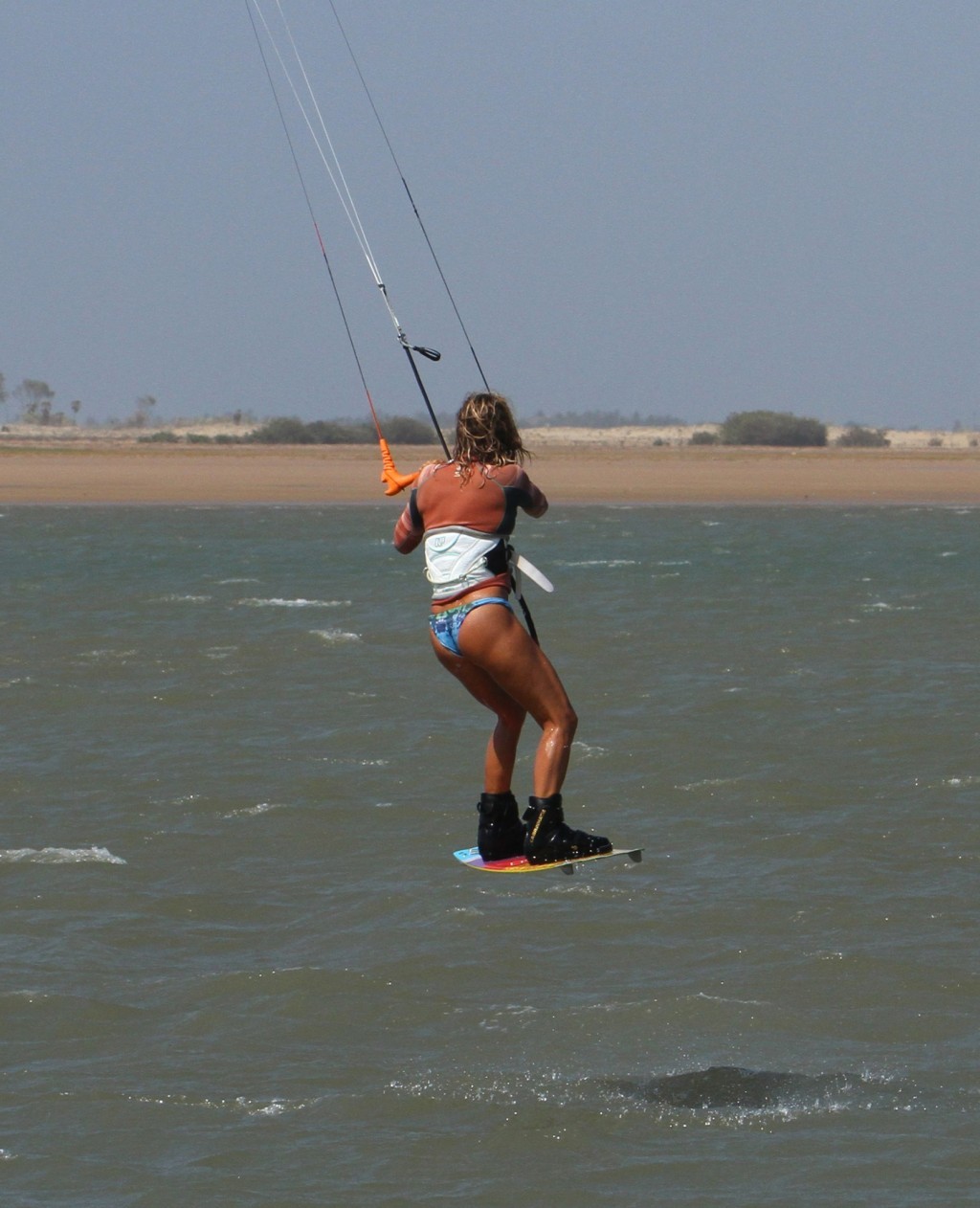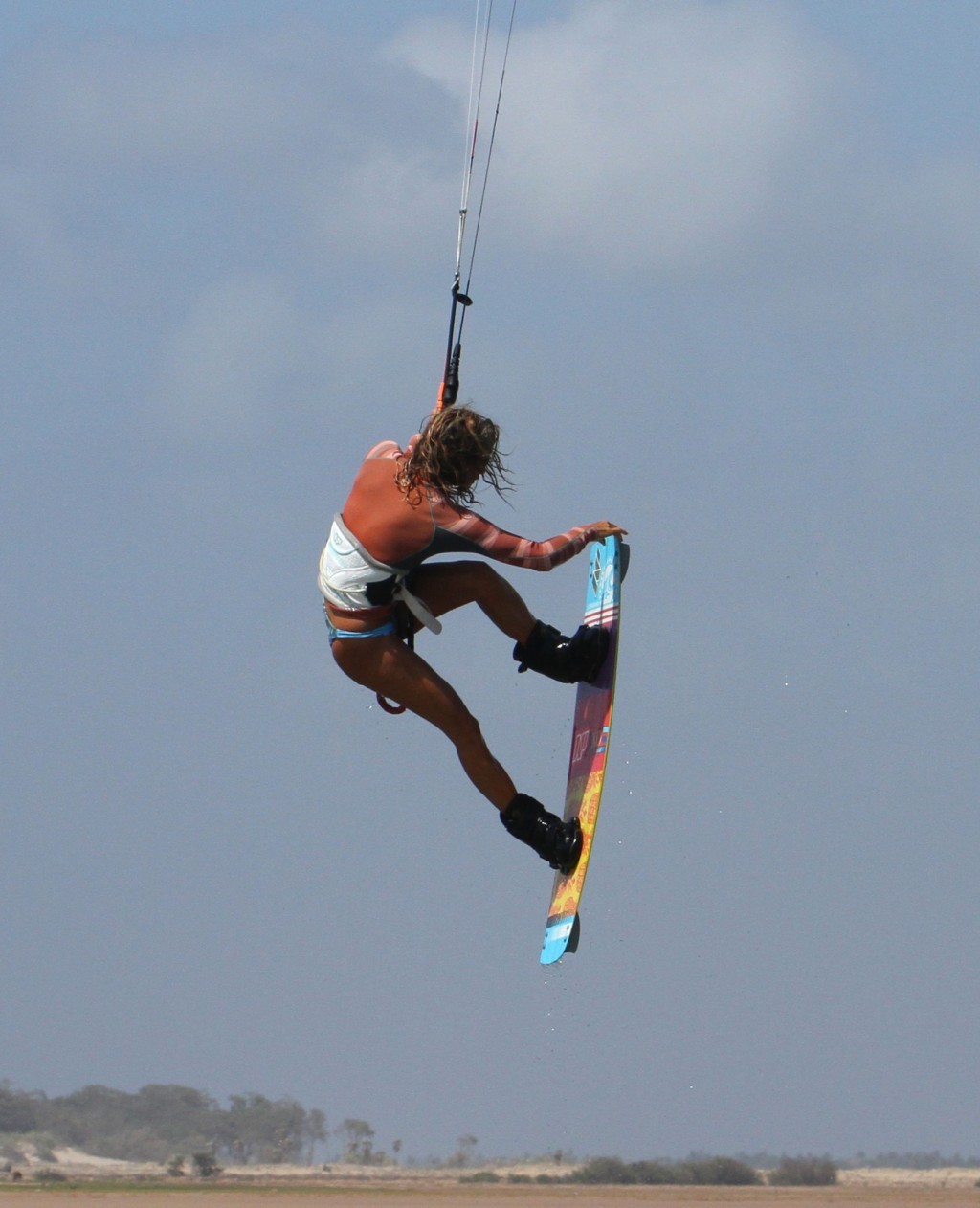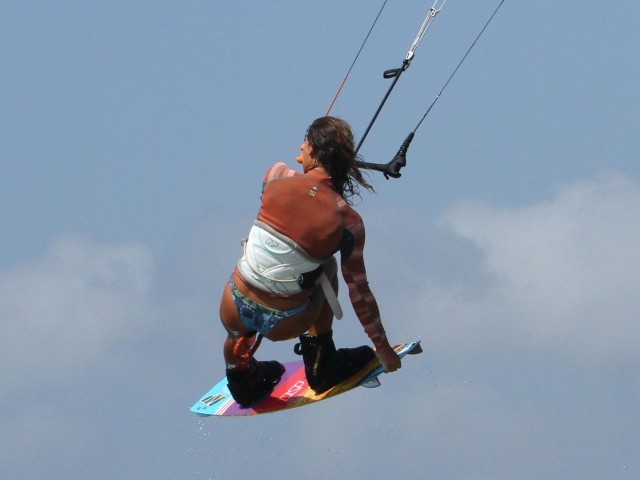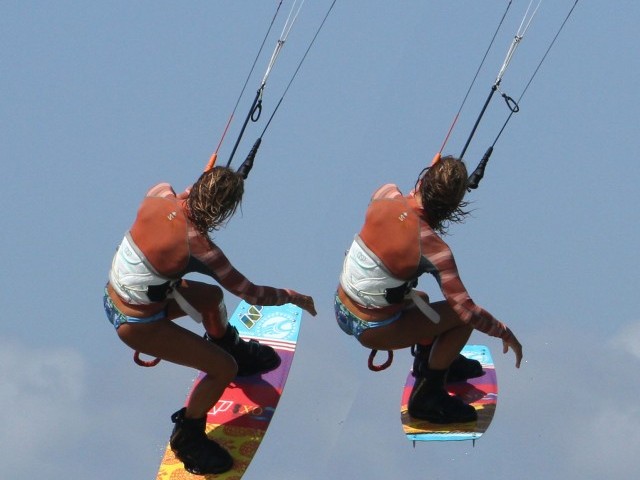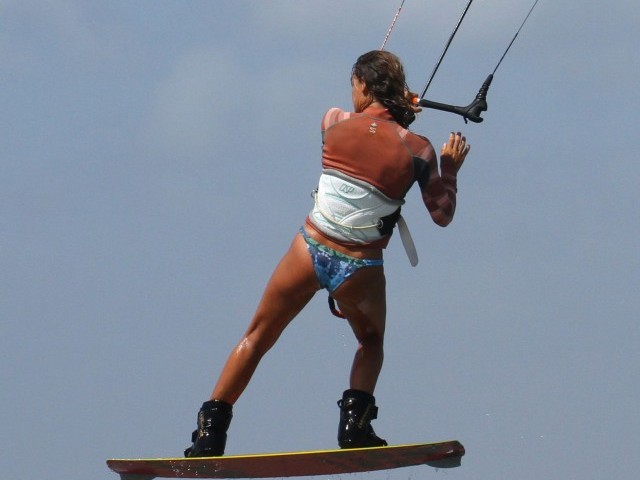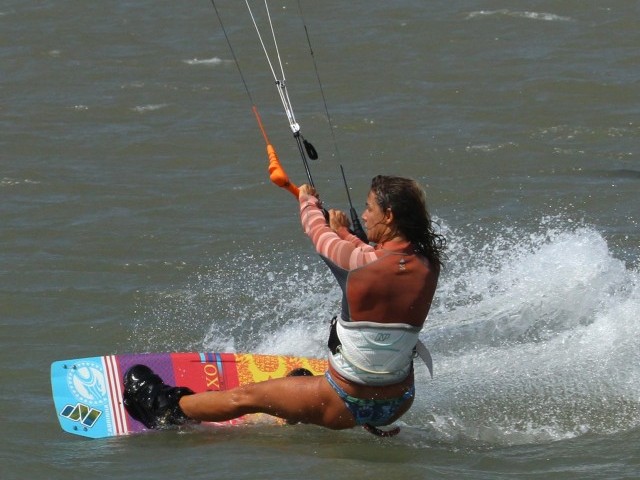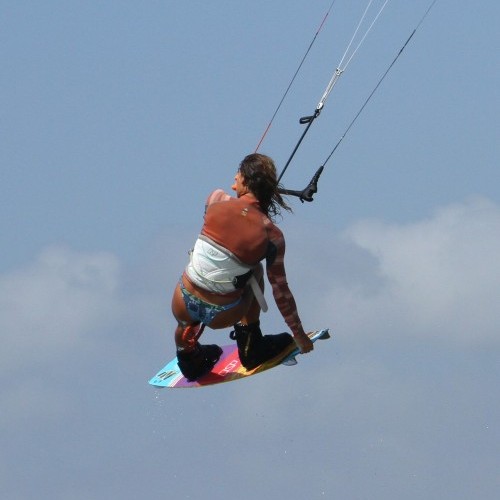
Double Grab – Tail to Nose
Technique / Intermediate
Introduction
Forever on the search for that little bit extra, something to challenge yourself and add a touch more zest to your airtime? Then here’s another stylish combo which should keep you busy for a while and looking good for even longer. Ten issues back we covered our first variant of the double grab, nose then tail, which one could argue is the simpler to squeeze in. This time, round we’re reversing the order of the grabs, so it’ll be a tail grabbed boner, hastily yet smoothly followed by a tweaked nose grab. Seems simple enough but there are a couple of hurdles to negotiate to nail this one:) Dare we recommend that you can tail and nose grab individually before moving on to this.
So let’s look at what you should be doing, state a few not so obvious points and have a gentle walk through the tricky bits.
Pic A The Jump
If we only had a pound for each time we repeat this, your jump and more precisely your take off is everything. The more that you have to do in the air, the more time you’ll need, so it needs to cut the mustard. You want height and float which equals time; you want the kite to be in the right place, and you want to feel in control. This all stems from the take off. To get both height and float, you’ll need two things, a solid edge and a decent send. Your kite doesn’t want to be any higher than 1 or 11 o’clock; otherwise, you won’t have a good edge. However, beware not to have it too low, as you need to be able to hold your edge while the kite moves, so the bigger the kite, the higher you’ll start it. Give the kite a good send back past twelve using both hands, while edging hard, not carving up. You can see that Karine is edging like Franz Klammer traversing the Hahnenkamm, bum low, board pushed away from her, plenty of spray and she’s given the kite a good send with her hands centred on the bar. This will give her float, height and control, a good mix of ingredients when you’ve got your plate full with what’s to come.
Pic B Multitasking
You need to get a wiggle on as there’s a deadline to meet. Normally after take off you’d be thinking about getting the kite set, making sure you’re comfy and preventing any unwanted surprises. However, you’ve got two cheeky grabs to squeeze in, so it’s time to connect with your feminine side (a tad easier for you ladies) and get on with a few things at once – this is your first potential hurdle. Looking at the pic, you can see that Karine has already released her back hand and is already lifting her back foot towards her, while her kite is still quite back post send. This means that you need both the confidence and ability to reposition and fly your kite from behind you with your front hand, there’s no time to get it into flight mode first. Karine keeps the bar in, and therefore keeps control of the kite, and gently steers it forward. There is no rush as; hopefully, she’ll be up there for a while. And as mentioned her back hand is off the bar already reaching down for the board’s tail, while she’s lifting her knees up, particularly her back one, so that the board will be within reach for the tail grab.
Pic C Grab Numero Uno
If you’re already au fait with the tail grab, you should manage this without too much hassle, as long as it’s quick enough. To make it look the bee’s knees the boner is a welcome addition, so pull the tail up towards you and push your front leg away from you, boning the board out for that extra point from the judges as Karine is demonstrating here. However, it’s crucial that you either bone the board up or horizontally. Some of you may be used to boning the board by dropping your front leg down, rather that stretching it forwards. There is nothing wrong with this, BUT if you intend to follow with a nose grab, it means you have a lot to do with the board before the nose is within reach. So remember to lift the front knee, keep the board up and push it out in front of you. Keeping the bar in on the sweet spot will help hold the board up.
Pic D And Here’s Why…
Have a good gander at the two pics, from right to left and you can clearly see the importance of not letting your front leg dangle down during the tail grab. This is realistically the second hurdle in this move. You can see that because Karine keeps the front of the board up during the first grab, it makes it much easier to move towards the nose grab. As she releases the tail, she already has her front knee high and as she lets her back foot drop she can bring the already high nose across in front of her. It’s also worth mentioning that although she has pressure on her front hand, her kite is still behind her, around 12:30. This not only keeps her balanced in the air but also if you cast your mind back to the original nose grab, it’s much easier to stretch and reach with the kite back. If it’s forwards, you’ll struggle to make the grab, as well as having the kite pull you off balance.
Pic E Grab Two
As a result of the previous step, Karine can quickly get her front knee high and across, so all that remained was to stretch her back leg down, et voila the nose grab is in the bag with time to spare. Once you’ve got the nose grab, you should start thinking about getting the kite above you so that it’ll float you down and it’s ready for landing. You can hold the nose grab until you’re close to the deck.
Pic F Touch Down
Landing should be as per usual. Give the kite a hefty dive down, not a steer to the side. This way the kite will pull you downwind which will keep you balanced and over the board. As the kite pulls aim your board downwind, drop your legs and get ready to take the landing. You can land this one or two handed, just be ready to steer the kite back up once you’ve carved back onto your edge.
Top Tips
Realistically you want to make sure that you’ve got enough power to jump well. You’re not aiming to break any records, but you need the time, so start off with a few jumps, a few boners and a few nose grabs. Having the kite back during your flight will not only help your balance, but it will mean that when you drop down and dive the kite, you will get some late lift as the kite moves, which will give you more time to finish and land comfortably.
Have a good look at the sequence and the videos to take this double grab in as one flowing move.
Common Problems
We’ve really already covered them, your main reason for not reaching or making the nose grab (presuming that you can normally make one) will be the position of the board during the tail grab. Make sure you keep the nose level or higher, and then the transition from tail to the nose will be both quick and do-able… Other than that it’s keeping the kite controlled with the back hand coming off early. If you’re dropping like a stone you’re letting the bar out and not redirecting the kite towards just behind 12. If you’re pulled off balance towards your front foot you’re giving it too much with your front hand, so ease off.
Keystones
- Good edge with a hefty send
- Early tail grab, so hand off and knees up immediately
- Keep nose up during tail grab
- Kite behind, front knee across and extended back leg for nose grab
- Hefty dive to lift you over the board for a downwind landing
This technique article was in Issue 58 of IKSURFMAG.
Related
By Christian and Karine
Christian and Karine have been working together as a coaching team, running improver to advanced kitesurfing clinics since 2003.






